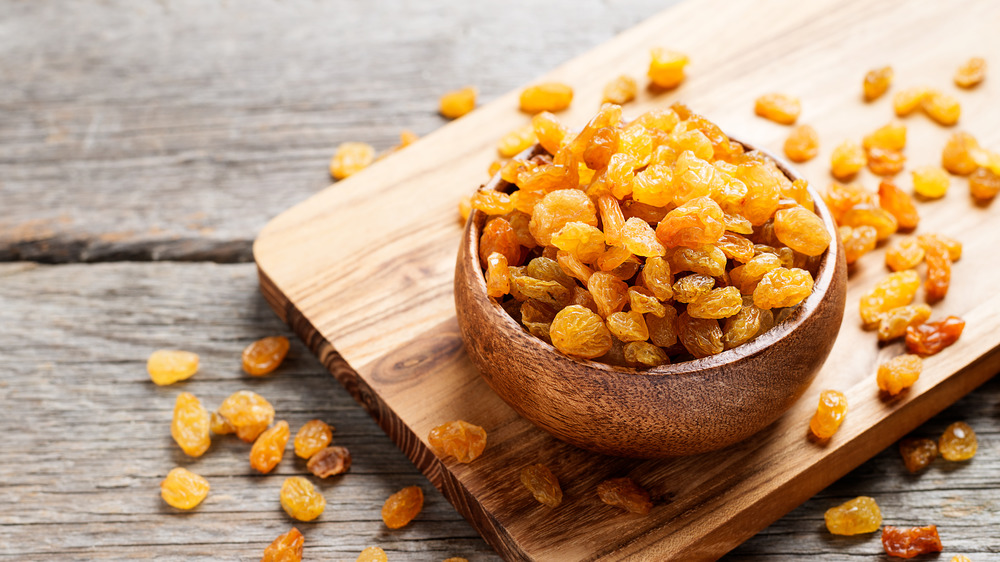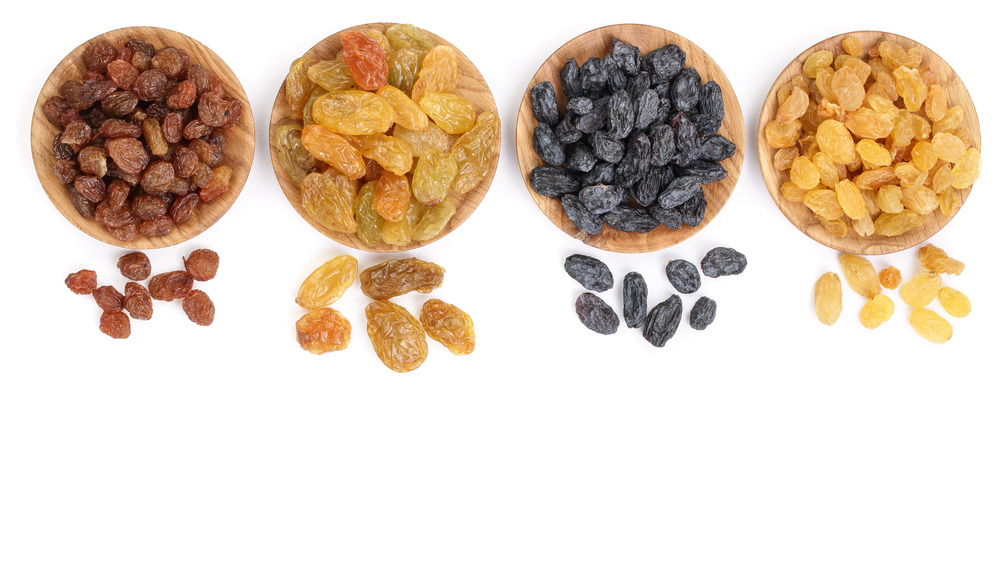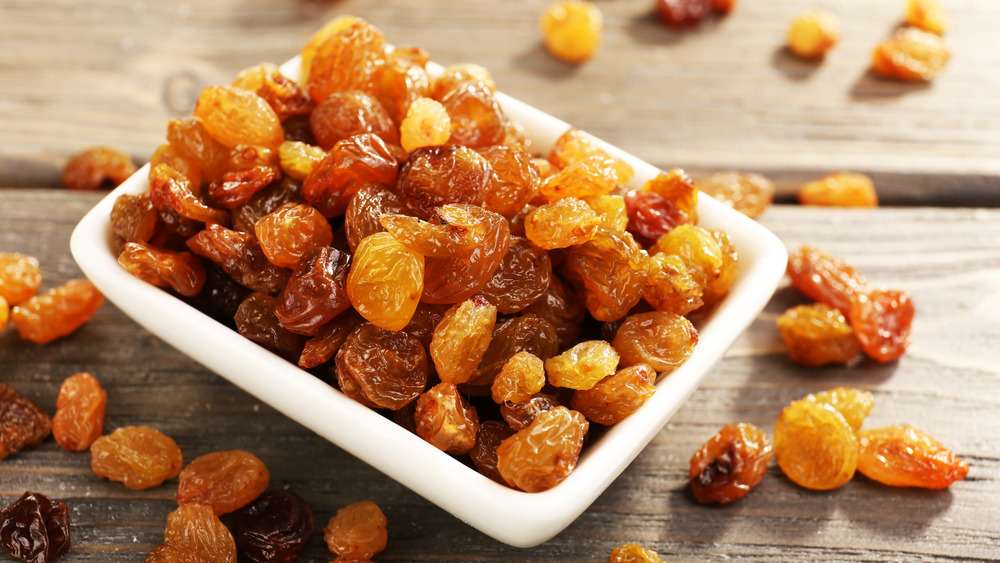What Are Golden Raisins And What Do They Taste Like?
Whether you were one of those kids in school who secretly tossed the red box of Sun-Maid raisins that were (unfortunately) packed in your lunchbox, or you were the one who religiously brought raisins to the cafe each day, every adult can agree on one thing: Post-childhood people just don't seem to talk about raisins. Ever.
So little, in fact, that many don't even realize that there are different kinds of raisins, and not only that, but they may be even tastier than the standard Sun-Maid variety. Today, we're going to pay raisins the respect that they deserve, starting with the star of this dried grape show: golden raisins.
Also known as sultanas, this variation is practically interchangeable with the classic dried brown raisin, but with a few hidden surprises (via Kitchn). For starters, golden raisins are distinguishable from typical browned raisins by first look alone. Golden raisins appear to be brighter, lighter, and almost translucent in color when compared to the dark, shriveled look of a traditional raisin. A common misconception is that the two variations are made from different colored grapes — golden from white, and regular raisins from red — but that's not the case after all, as Kitchn reports.
Golden raisins aren't all that different from regular raisins — at least, not at first
Believe it or not, golden raisins and regular raisins are derived from the same grape. According to At Your Business, the regular variety are made using solar power only — hence the Sun-Maid name that's long been associated with the controversial dried fruit. It takes nearly three weeks of laying in the hot sun to turn the grapes fully brown in a process called "browning," which will ultimately create the perfect (standard) raisin.
However, the outlet explains that golden raisins "undergo a more sophisticated process" in comparison. These sultanas are in and out of dehydrators in under 24 hours, making them far more efficient to create compared to the traditional raisin. They're then preserved in sulfur dioxide, which is an antioxidant that helps amp up the golden color that has become synonymous with a good batch of sultanas.
Spring for golden raisins for a bit of added flavor in your baking
While brown and golden raisins can effectively be swapped out one for one in any recipe, Epicurious suggests sticking with sultanas when it comes to baking. Golden raisins tend to boast a "fruitier, lighter flavor" because of the way they are dried and preserved, On Food and Cooking author Harold McGee explains, according to Epicurious. Even better? The flavonoids are even greater in the golden version, meaning that sultanas are antioxidant-rich and at least slightly healthier than the standard store bought box.
Because golden raisins are made in a more controlled environment, they often turn out plumper than their traditional counterparts. Since you can't exactly control the weather outdoors, the traditional process of making raisins leads to a browner, almost caramelized taste (via Food Crumbles). If you're looking for a raisin with a brighter flavor and juicier texture, swap out the usual for sultanas the next time you're baking a zesty treat.


